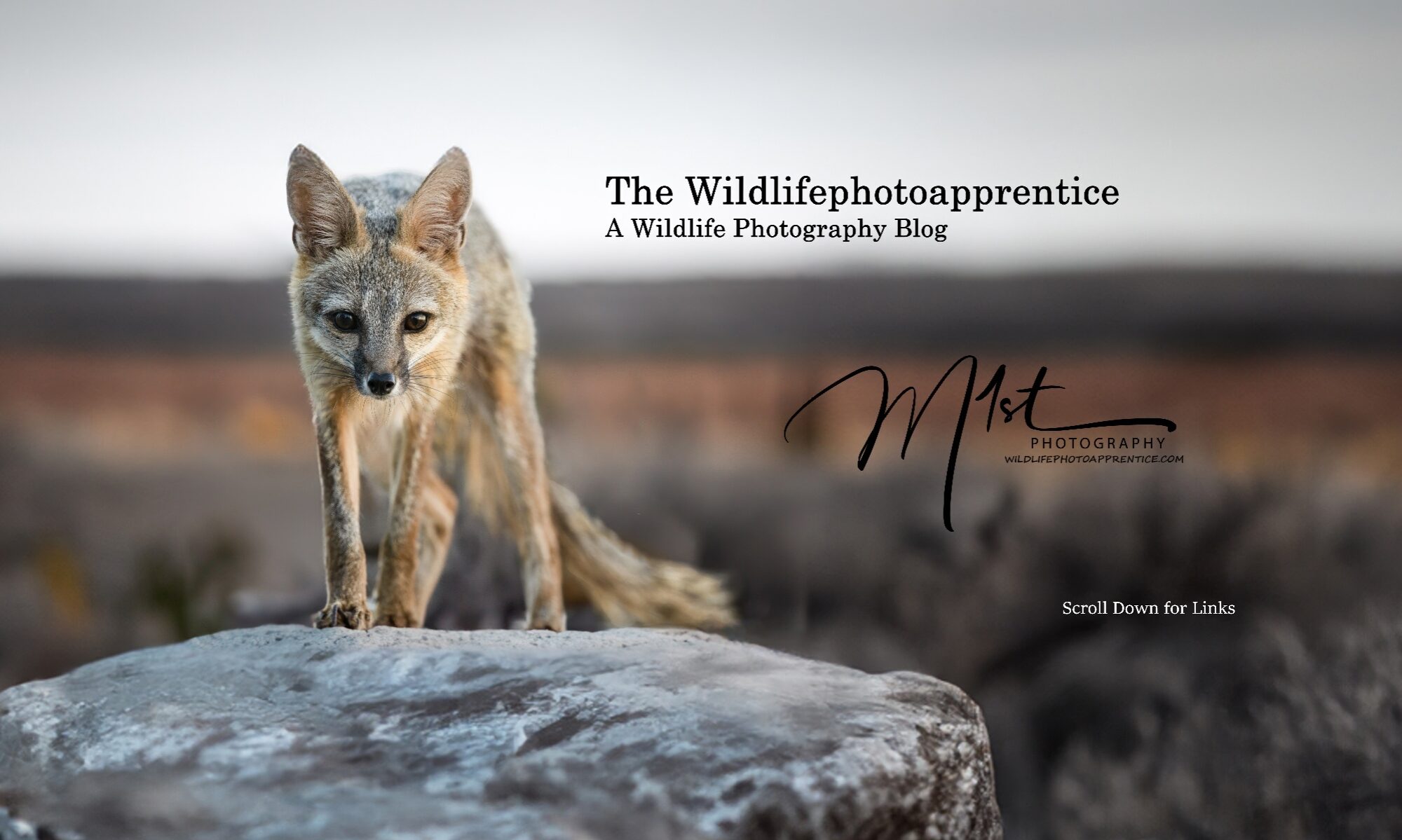Big Bend National Park is a magnificent destination for wildlife photography, with a diverse range of species and habitats to explore. The possibilities are vast with a wide range of animals such as black bears, mountain lions, bighorn sheep, and over 450 species of birds, as well as stunning landscapes that provide a perfect backdrop for capturing memorable shots of the region’s unique flora and fauna.
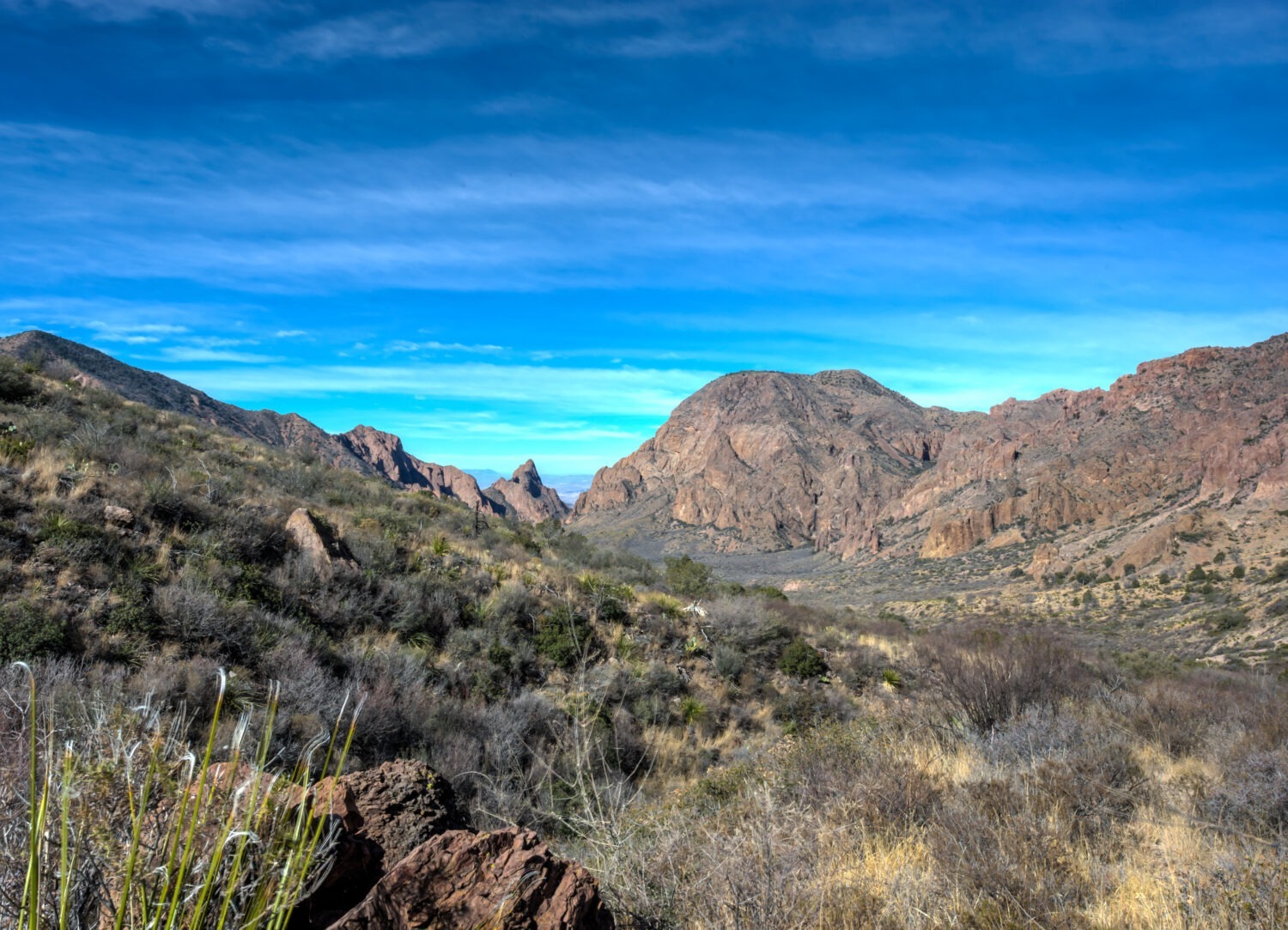
The region’s vast and diverse landscape provides an excellent habitat for a wide variety of wildlife species, making it a prime location for capturing stunning photographs of animals in their natural habitat. Additionally, the Big Bend’s remote location and protected status mean that wildlife in the area is relatively undisturbed, offering photographers the chance to observe and photograph animals behaving naturally without the distractions of human activity. Lastly, the Big Bend’s unique mix of desert, mountains, and river ecosystems makes it an incredibly scenic location, providing photographers with a breathtaking backdrop for their wildlife shots.
The park is named after a prominent bend in the Rio Grande River that runs through the region. The park is located in a region known as the “Chihuahuan Desert,” which is one of the largest and most biologically diverse deserts in the world. Big Bend National Park is, well “Big”. The park covers approximately 801,163 acres (1,252 square miles or 3,242 square kilometers) of land. The park’s highest peak is Emory Peak, which rises to an elevation of 7,825 feet (2,385 meters). The park has a rich cultural history, with evidence of human habitation dating back over 10,000 years. The region was inhabited by various indigenous groups before the arrival of Spanish explorers in the 16th century. Big Bend is known for its spectacular sunsets and starry nights which are particularly vibrant due to the lack of light pollution in the region.
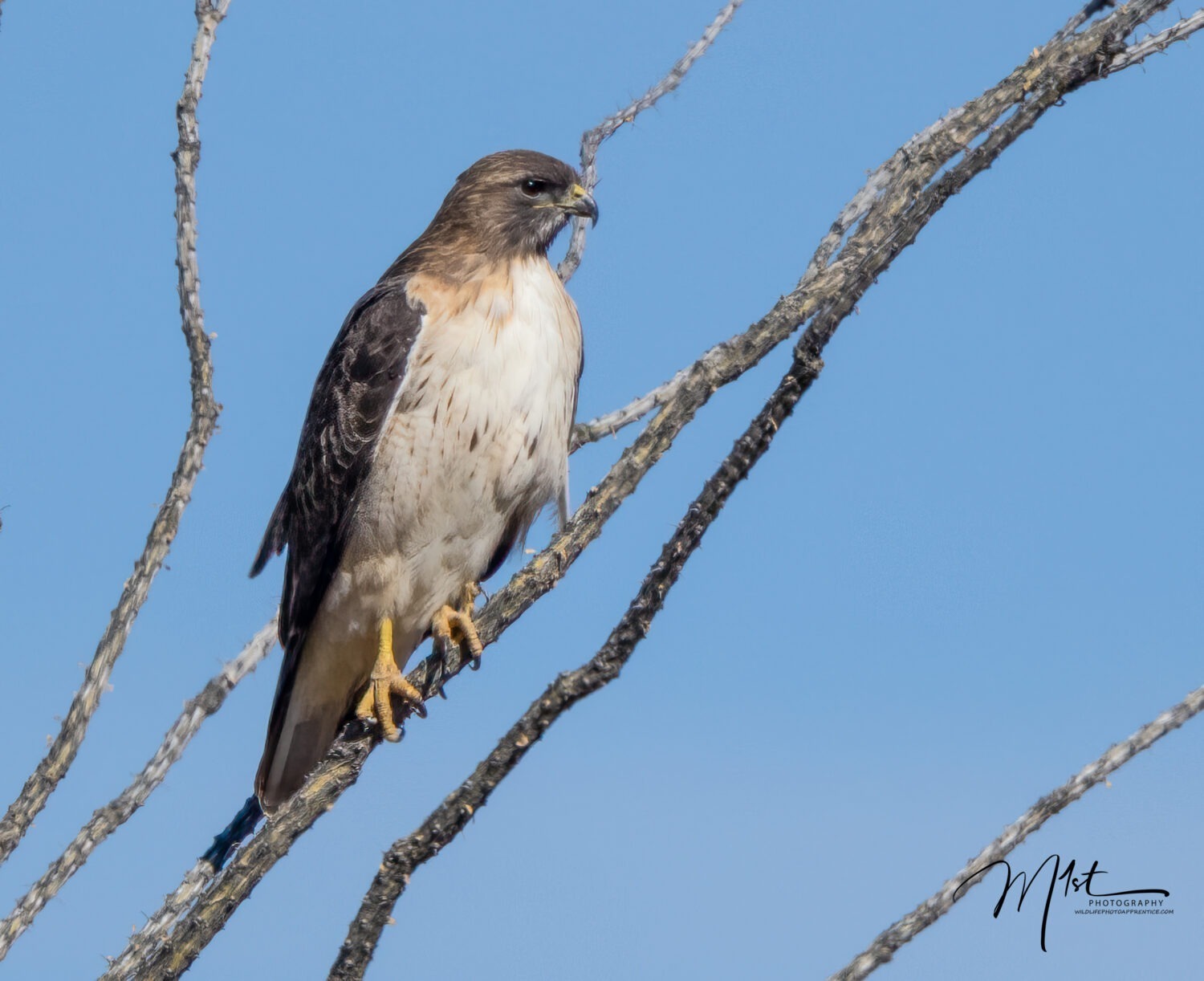
If you’re considering taking a trip to Big Bend for wildlife photography, snag a map of the park, and let’s look at what one possible itinerary for photographing wildlife in Big Bend National Park over a weekend might look like.
Day 1:
- Morning: Start early in the morning with a drive along Ross Maxwell Scenic Drive. Keep an eye out for wildlife such as roadrunners, javelinas, and deer. Stop at Sotol Vista for a panoramic view of the Chisos Mountains.
- Afternoon: Head to the Rio Grande Village area for a chance to see black bears, mountain lions, and coyotes. Take a leisurely walk along the nature trail near the campground to look for bird species such as vermilion flycatchers and painted buntings. As the day draws to a close, set up your camera and tripod to capture the beautiful sunset over the Rio Grande.
Day 2:
- Morning: Head to the Chisos Basin area, which is known for its mountain lions and black bears. Take the Lost Mine Trail for an early morning hike and keep an eye out for wildlife along the way. The trail offers stunning views of the surrounding mountains and valleys, so be sure to bring your camera.
- Afternoon: Make your way to the Santa Elena Canyon, which is a popular spot for birdwatching and wildlife photography. Look for golden eagles, great blue herons, and other bird species as you hike along the canyon. You might also see mule deer, coyotes, and foxes in the area.
Day 3:
- Morning: Head to the Homer Wilson Ranch area for a chance to see bighorn sheep. The ranch is located in a remote part of the park, so be prepared for a bumpy ride on the dirt road. Once you arrive, take a walk along the Blue Creek Trail and keep an eye out for the sheep grazing on the rocky hillsides.
- Afternoon: Finish your weekend by exploring the hot springs area, which is home to a variety of bird species such as canyon wrens and phainopeplas. Take a dip in the hot springs, and then set up your camera to capture the beautiful sunset over the Chisos Mountains.
The above itinerary is just a suggested starting point. The geographic area is huge and covering it in a weekend may be unrealistic. The more time you have to explore the better. Plan accordingly. In the next section let’s look at the diversity of wildlife you might encounter and photograph while in the park.
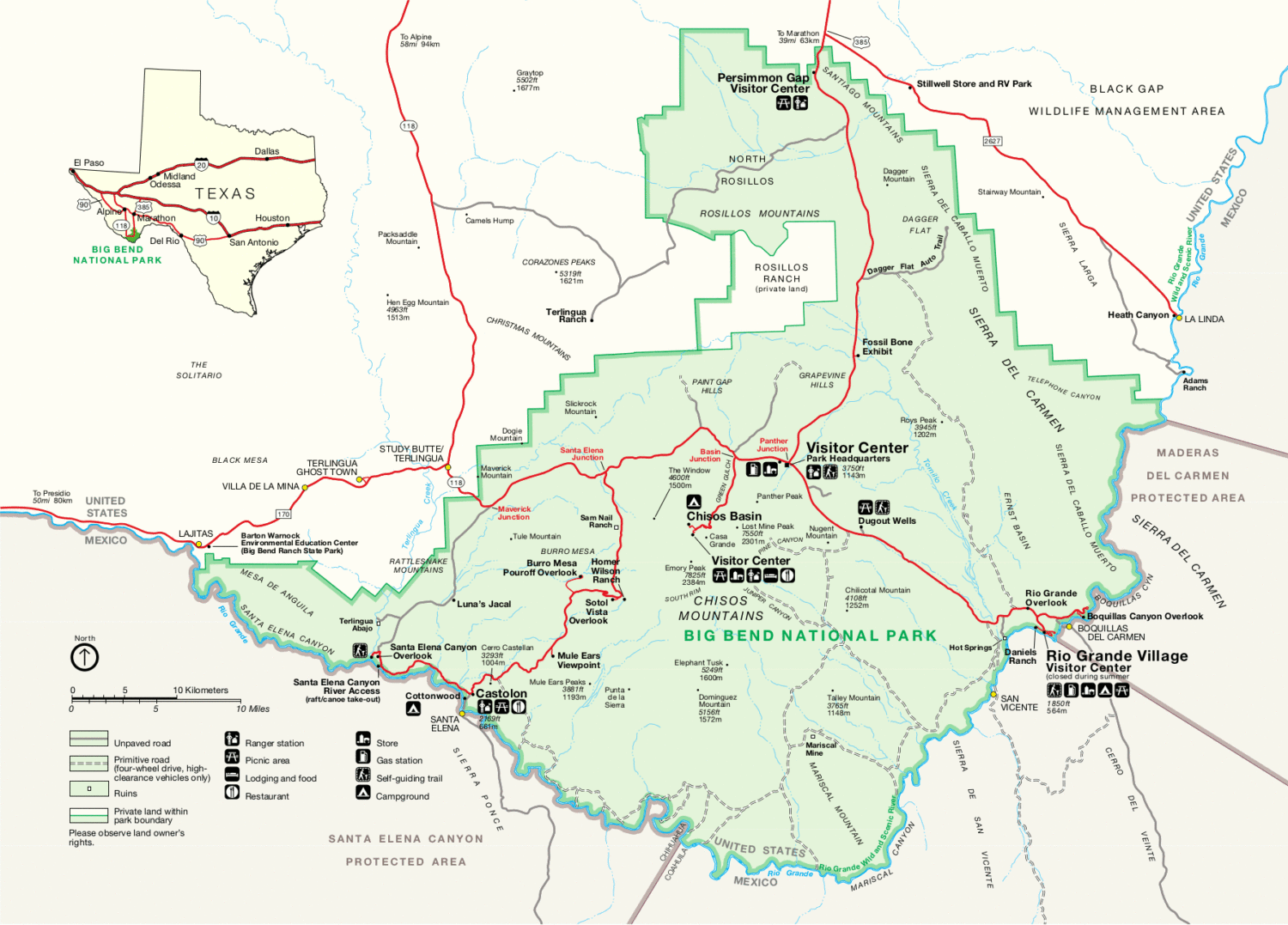
Mammals
Big Bend National Park is home to a wide variety of mammals, many of which can be seen by visitors. Here are some of the common mammals that you might see during your visit to Big Bend:
Black Bear: Big Bend is one of the few places in Texas where black bears can be found. They are most commonly seen in the Chisos Mountains.
Mountain lion: Also known as a cougar or puma, mountain lions are elusive and seldom seen in the park. They are most active at dawn and dusk and can be found throughout the park.
Coyote: Coyotes are common in Big Bend and can be seen throughout the park. They are most active at night and during the early morning hours.
Javelina: Javelinas, also known as collared peccaries, are members of the pig family and can be seen in many areas of the park. They are most commonly seen at dawn and dusk.
Gray fox: Gray foxes are nocturnal and can be seen in the park’s grasslands, desert scrub, and mountains.
Mule deer: Mule deer are abundant in the park and can be seen throughout the day. They are most active in the early morning and late afternoon.
Bighorn sheep: Bighorn sheep are rare in Texas, but they can be seen in the remote areas of Big Bend. They are most commonly seen in the Chisos Mountains.
Kit fox: Kit foxes are small and elusive and can be seen in the park’s desert areas.
As with all wildlife photography encounters, wildlife, particularly mammals, can be random, infrequent, and most likely to occur in the morning or evening.
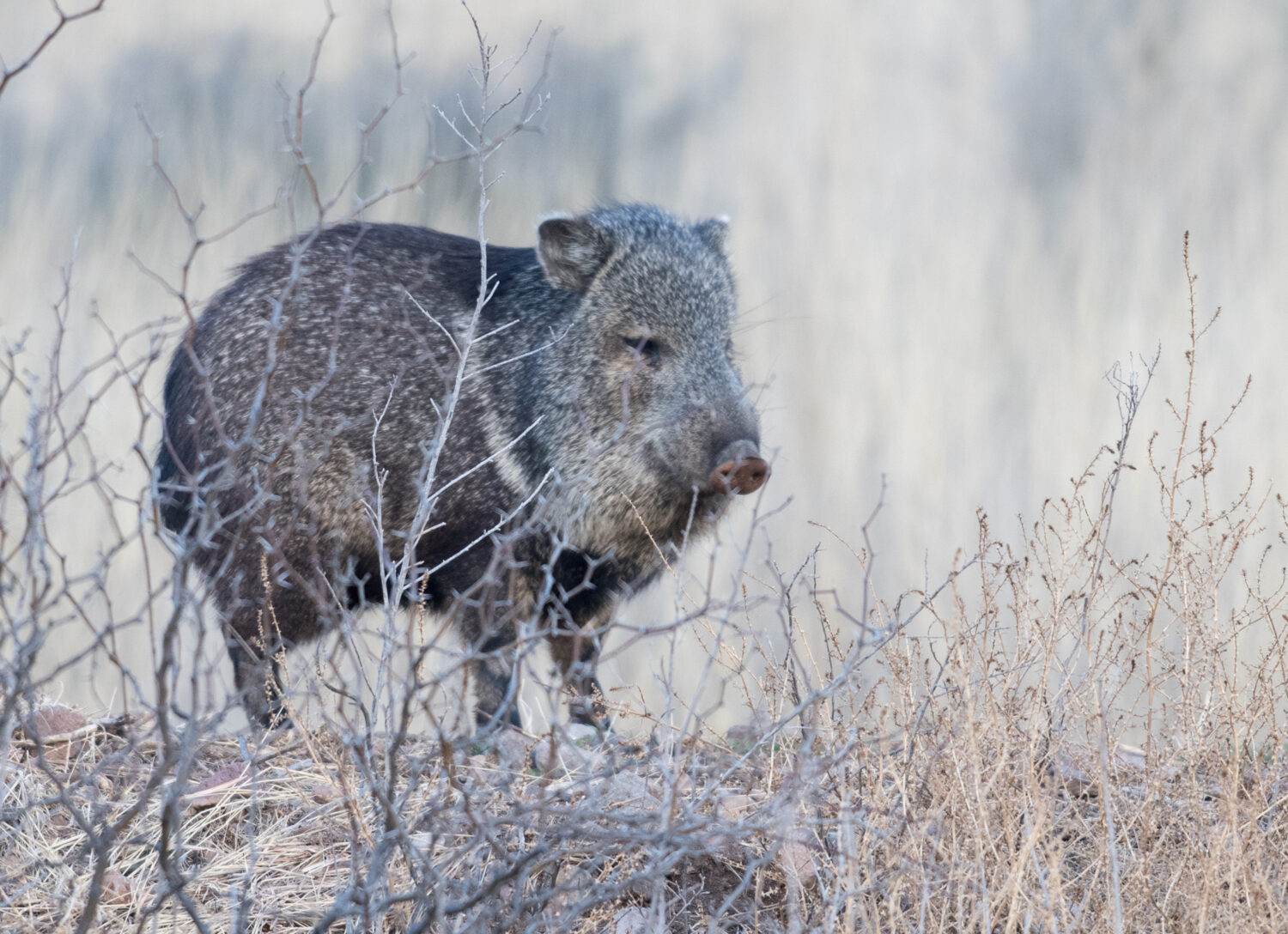
Birds
Big Bend National Park is home to a diverse array of bird species, with over 450 species having been recorded in the park. Here are some of the most commonly sighted bird species in Big Bend:
Greater Roadrunner: This iconic desert bird is often seen running along the ground or perched on low branches or rocks.
Colima Warbler: This bird is found in the high-elevation forests of the Chisos Mountains and is known for its distinctive song.
Black-chinned Hummingbird: This small hummingbird is a common sight at feeders and flowers throughout the park.
Gambel’s Quail: This ground-dwelling bird is often seen running across open areas or foraging for food among the brush.
Golden-fronted Woodpecker: This woodpecker is commonly seen in wooded areas throughout the park and is known for its distinctive red and yellow markings.
Canyon Wren: This bird is found in the rocky canyons of the park and is known for its beautiful song.
Vermilion Flycatcher: This colorful bird is often seen perched on wires or fences and is known for its distinctive bright red plumage.
Common Raven: This large bird is a common sight throughout the park, often seen soaring overhead or perched on rocky outcroppings.
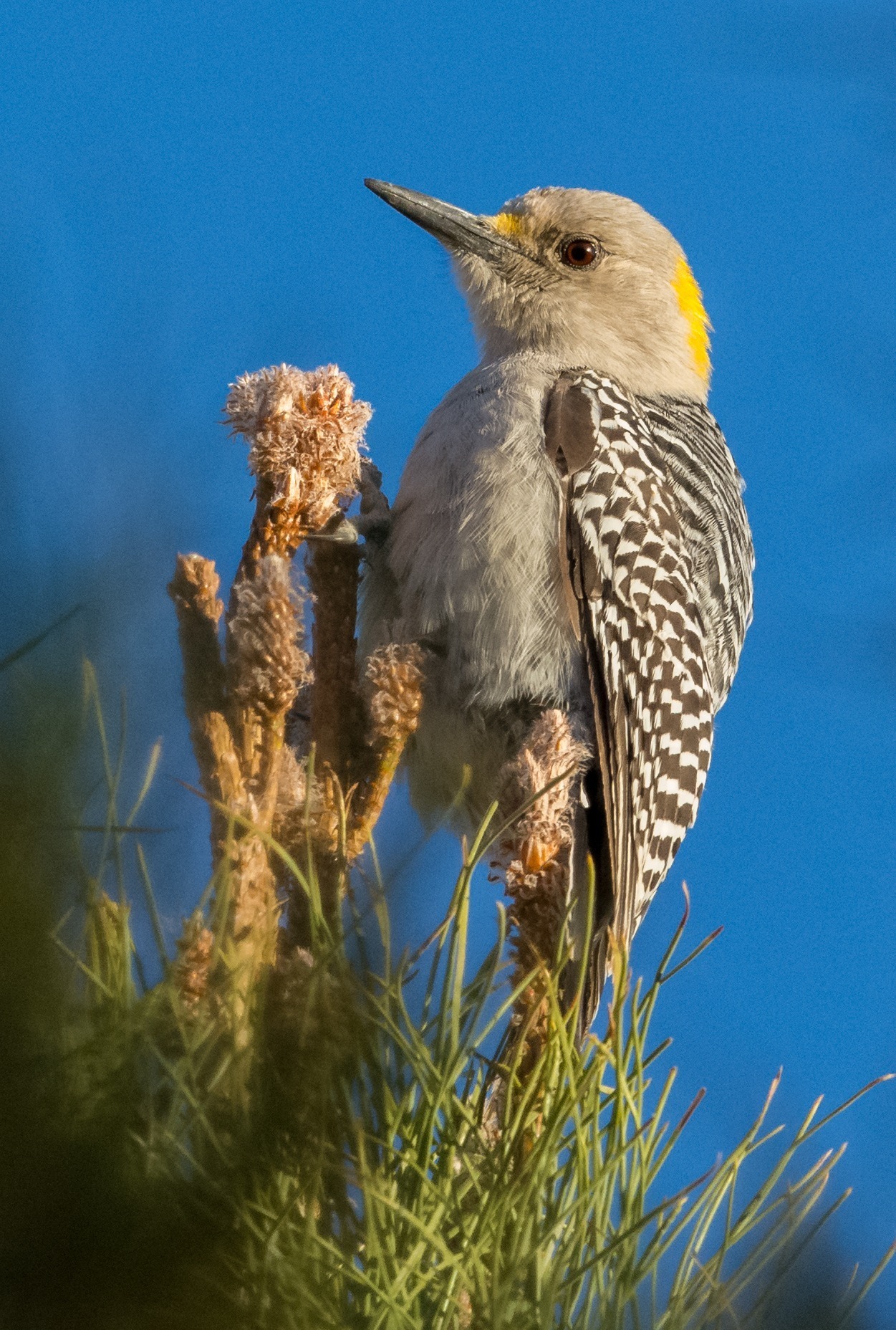
Rare Birds
Big Bend National Park is home to several rare and sought-after species. Here are some of the rare bird species that can be found in Big Bend:
Lucifer Hummingbird: This tiny hummingbird is one of the rarest birds in North America and is found only in the mountains of the southwest, including the Chisos Mountains in Big Bend. Its bright green and purple plumage makes it a popular target for birdwatchers.
Zone-tailed Hawk: This hawk is a mimic of the Turkey Vulture and often flies among vultures, making it difficult to spot. It is a rare bird of prey that is found in the canyons and cliffs of the park.
Montezuma Quail: This secretive quail is a sought-after species for birdwatchers and is found in the park’s higher elevations.
Mexican Jay: This jay is a colorful bird with blue and gray plumage found in the Chisos Mountains’ oak woodlands.
Gray Vireo: This vireo is a rare species found in the desert scrublands and canyons of the park. It is often difficult to spot due to its small size and secretive behavior.
Black-capped Vireo: This vireo is a rare and endangered species that is found in the oak woodlands of the Chisos Mountains. It is a small bird with a distinctive black cap and white eyebrows.

Lodging
Big Bend National Park offers a variety of lodging options for visitors, including campgrounds, RV sites, and lodges. Here are some of the best places to stay when visiting Big Bend.
The Chisos Basin Lodge. Located in the heart of the Chisos Mountains, the Chisos Basin Lodge is the only lodging option within the national park that offers full-service amenities. The lodge is very popular with visitors and offers comfortable rooms with stunning mountain views, a restaurant, and a gift shop. Reservations go fast, so think ahead and plan on booking well in advance.
Next is the Rio Grande Village RV Park and Campground. This campground is located in the eastern part of the park and offers campsites for tents and RVs. The campground is an excellent option for visitors who want to be close to the Rio Grande River and the hiking trails in the area.
Cottonwood Campground: This campground is located in the western part of the park and offers campsites for tents and RVs. The campground is an excellent option for visitors who want to be close to the Santa Elena Canyon and the Ross Maxwell Scenic Drive. Again book early as this campground is very popular. Great Horned Owls are known to frequent the cottonwood trees in this area.
Terlingua Ranch Lodge. Located just outside the national park, Terlingua Ranch Lodge offers a variety of lodging options, including cabins, RV sites, and tent sites. The lodge is a great option for visitors who want to explore the nearby ghost town of Terlingua and the Big Bend Ranch State Park.
Lajitas Golf Resort and Spa. Located just outside the national park, Lajitas Golf Resort and Spa offers a luxurious lodging option with amenities such as a golf course, a spa, and a restaurant. The resort is a great option for visitors who want to explore the nearby Big Bend Ranch State Park and the Rio Grande River. This is a very nice property with upscale amenities that is worth the visit. The cost is more but I think it is worth it.
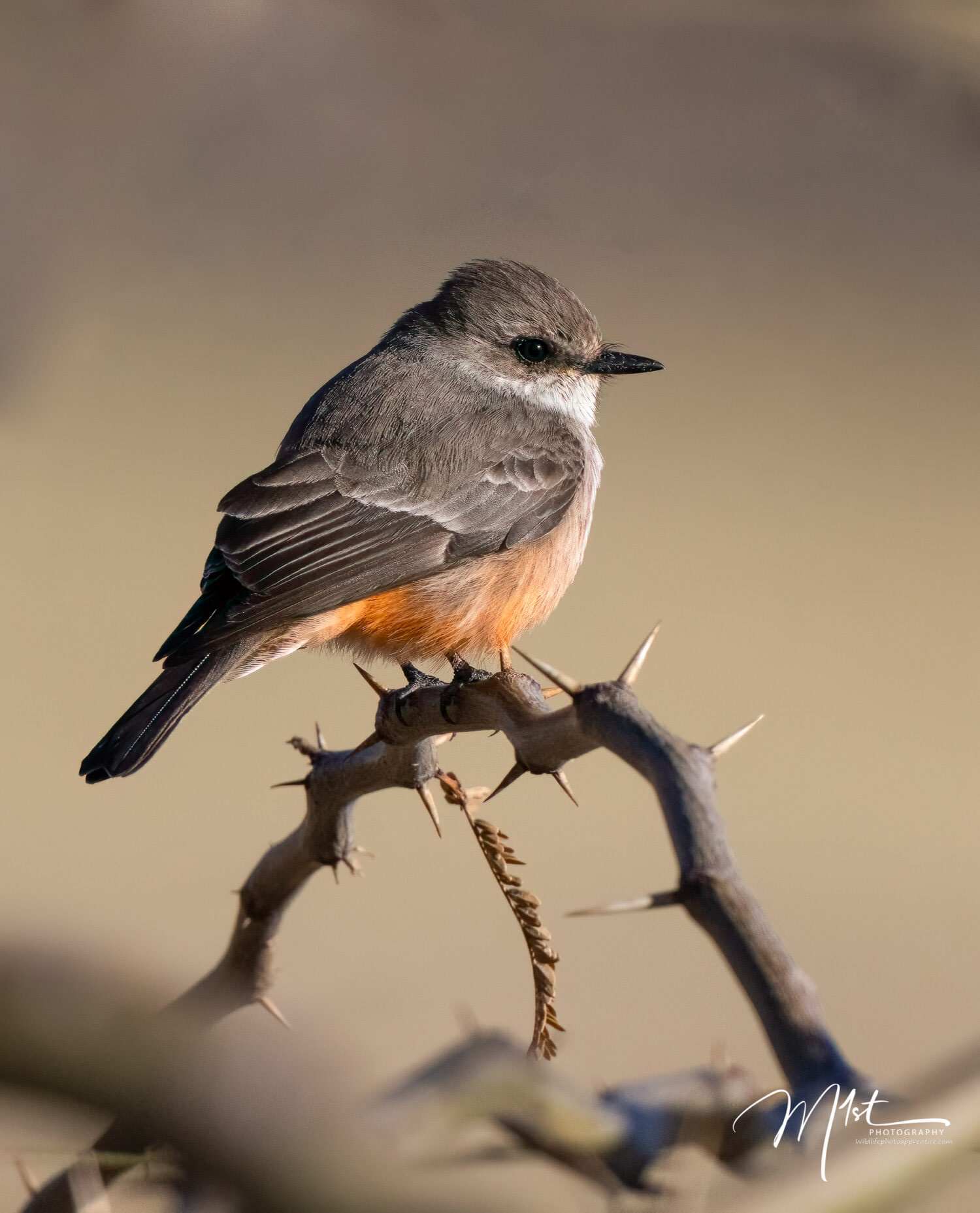
Dining
Big Bend National Park and its surrounding areas offer a variety of dining options for visitors. Here are some of the best places to eat when visiting Big Bend.
Chisos Mountains Lodge Restaurant. Located in the heart of the Chisos Mountains, the restaurant offers a variety of menu options, including Southwestern cuisine and classic American dishes. The restaurant also features stunning views of the surrounding mountains. This is another must-stop for lunch just for the views from the porch.
The Starlight Theatre Restaurant and Saloon. Located in the ghost town of Terlingua, the restaurant offers a unique dining experience in a historic building that was once a movie theater. The menu features a variety of dishes, including burgers, steaks, and Tex-Mex cuisine. The saloon also offers live music and a selection of beers, wines, and spirits. This is one of the most popular venues in the area. If you plan on being there on Friday or Saturday go early and plan to stay late. It’s hard to get a table if you don’t.
La Posada Milagro. Located in the town of Terlingua, this Mexican restaurant offers authentic Tex-Mex cuisine in a casual and welcoming atmosphere. The menu features a variety of dishes, including tacos, burritos, and enchiladas.
High Sierra Bar and Grill. Located in the town of Terlingua, this restaurant offers a variety of menu options, including burgers, sandwiches, and Tex-Mex cuisine. The outdoor patio offers stunning views of the surrounding mountains.
La Kiva is located in the town of Terlingua, this restaurant and bar offer a casual atmosphere and a variety of menu options, including burgers, sandwiches, and Tex-Mex cuisine. The bar also offers a selection of beers, wines, and spirits.
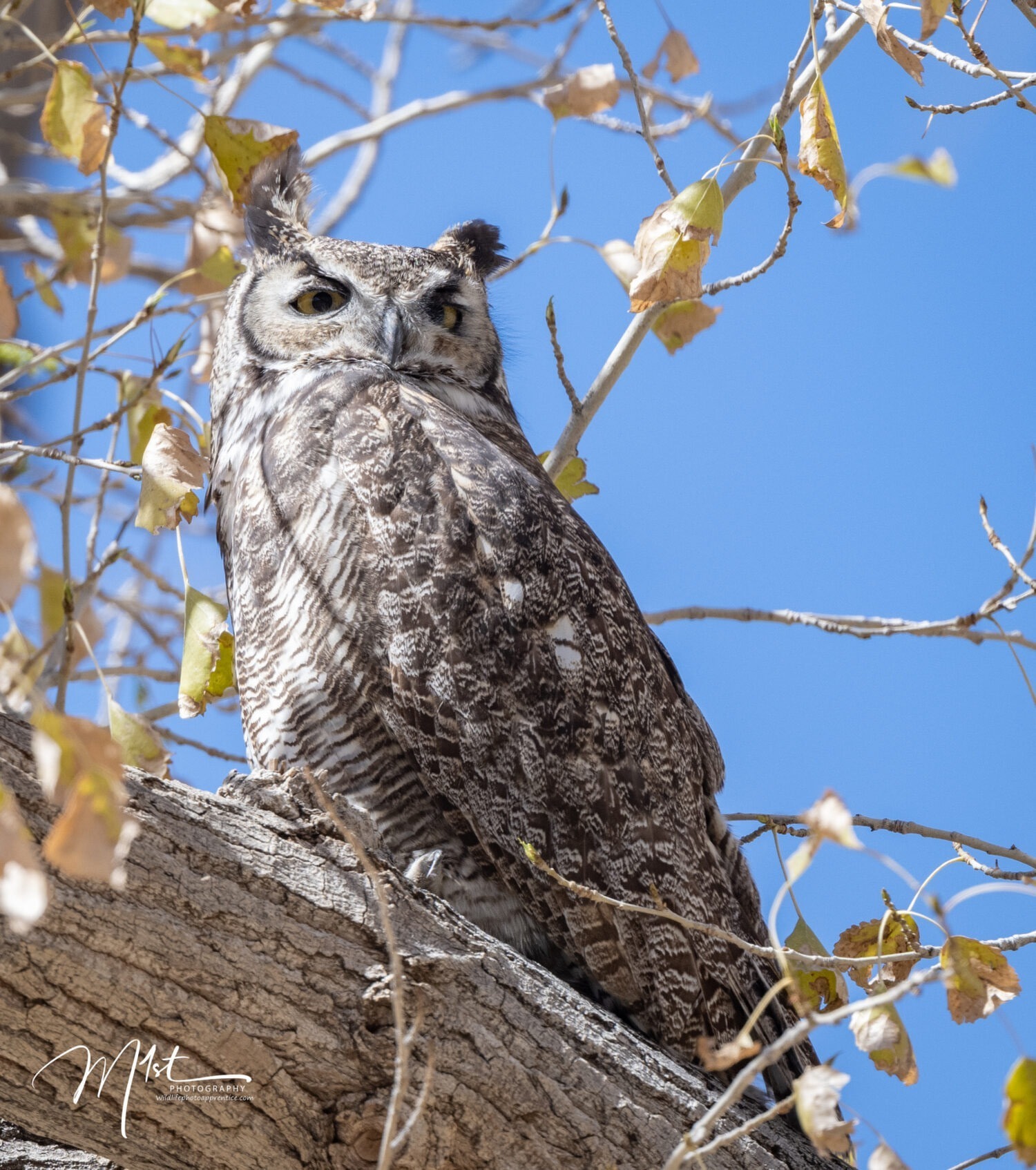
The Surrounding Area
In addition to Big Bend National Park, there are also many other places to explore in the surrounding areas. If you have the time during your trip, here are some suggestions for other places to visit.
Terlingua Ghost Town is located just outside the national park. The Terlingua Ghost Town is a historic mining town that has been largely abandoned. Visitors can explore the ruins of the town’s old buildings and wander through its cemeteries.
The Big Bend Ranch State Park is located adjacent to the national park, Big Bend Ranch State Park offers a range of outdoor activities, including hiking, mountain biking, and horseback riding. The park features stunning landscapes and diverse wildlife including Desert Big Horned Sheep.
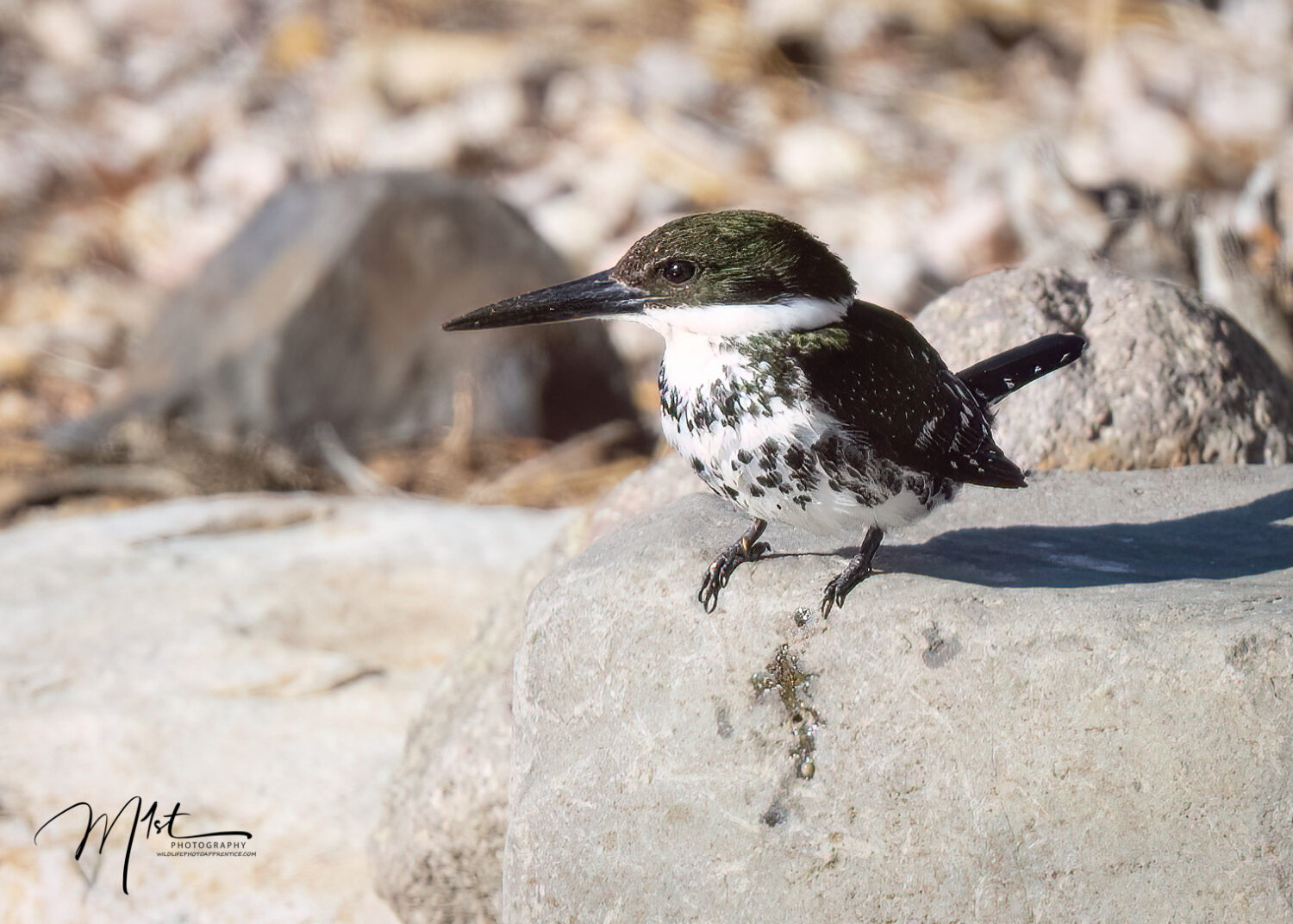
The town of Marfa is located about 70 miles north of Big Bend. Marfa is a small town known for its art scene, including the Chinati Foundation, a contemporary art museum, and the Marfa Lights, a mysterious phenomenon that has been observed in the area for centuries.
Davis Mountains State Park is about 100 miles north of Big Bend. Davis Mountains State Park offers a range of outdoor activities, including hiking, mountain biking, and stargazing. The park features stunning mountain landscapes and a diverse population of birds. There is a small bird blind area within the park that attracts large numbers of regional bird species. Staying at the Indian Lodge in the park is a wonderful experience but requires reservations far in advance through the Texas Parks and Wildlife website.
The Fort Davis National Historic Site is a well-preserved frontier military post that dates back to the mid-19th century. Visitors can explore the fort’s historic buildings and learn about its role in the settlement of the American West.
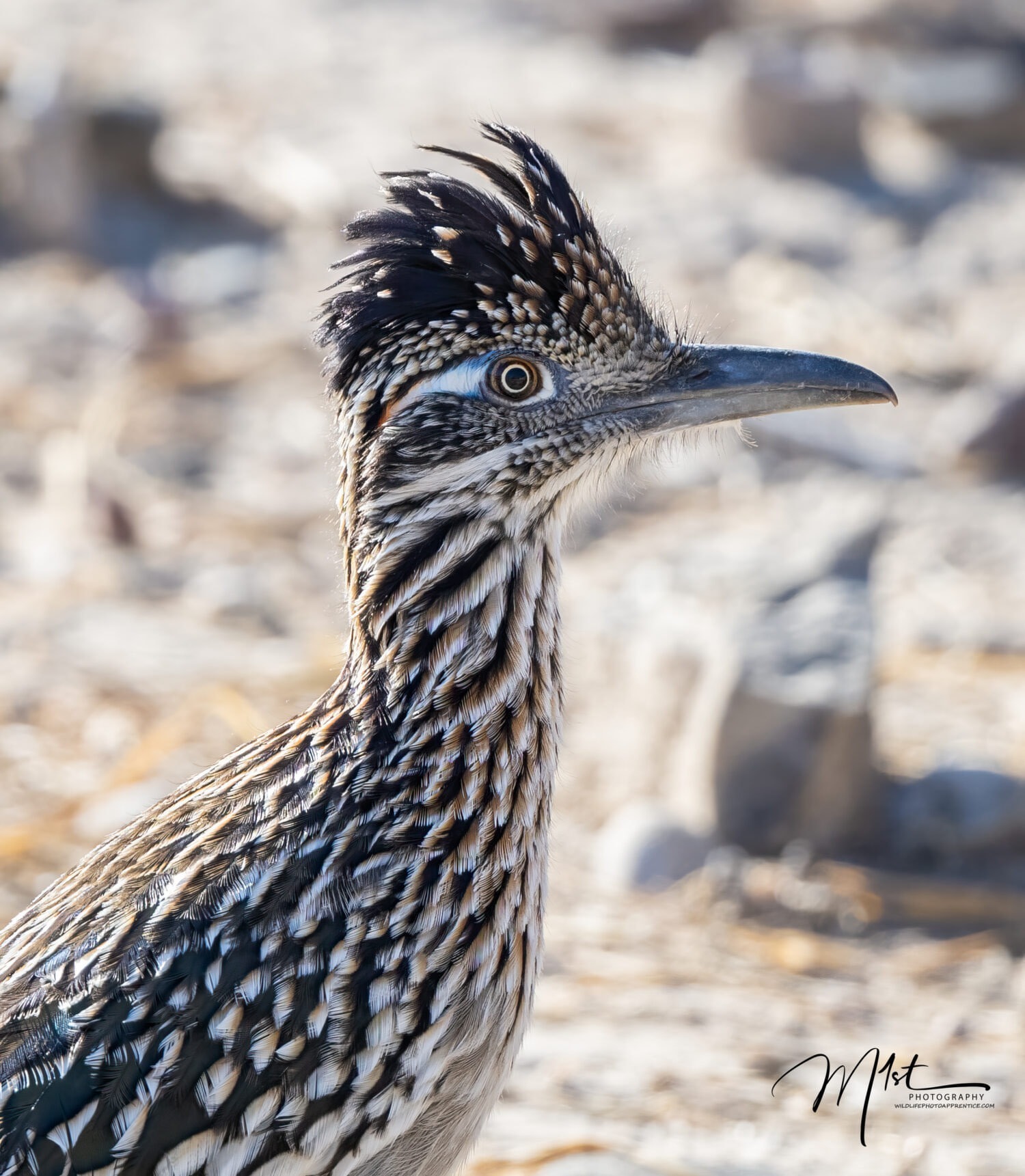
Travel Tips
Before you travel to the big bend it is essential that you plan your trip well. Big Bend is a remote and rugged area. The hostile terrain, extremes of weather, and vast distances you must travel between points of interest demand adequate preparation to remain safe and stay out of trouble. The number of deaths in Big Bend National Park varies from year to year, but on average, the park sees around 12-15 fatalities per year. Most of these fatalities are due to accidental falls, heat exhaustion, or drowning in the Rio Grande. Good planning will ensure you have all the supplies and equipment you need including food, water, camping gear, and appropriate clothing and footwear. Here are some travel tips for anyone planning a trip to Big Bend National Park.
Try not to allow your car’s gas tank to drop below half full. Gas within and around the park is limited. Ensure you have a good spare tire particularly if you plan on entering the backcountry.
Weather conditions in Big Bend can be extreme, with hot temperatures in the summer and cold temperatures in the winter. Be sure to check weather conditions before your trip and pack accordingly. Understand the signs of heat stroke and stay hydrated.
Plan to stay on designated trails. Big Bend has a delicate desert ecosystem, so it’s important to stay on designated trails and avoid damaging vegetation or disturbing wildlife.
Drive with caution while in the park. Speed limits are reduced throughout the park. Many of the roads in Big Bend are unpaved and can be rough and require high clearance or four-wheel drive so proceed with caution and be aware of wildlife crossing the roads.
Carry plenty of water. I’ll say it again, carry plenty of water with you and in your car. It’s important to stay hydrated in the hot and dry climate of Big Bend, so carry plenty of water with you on hikes and other outdoor activities. The sun in the summer is intense, so appropriate clothing, hats, and plenty of sunscreen are mandatory.
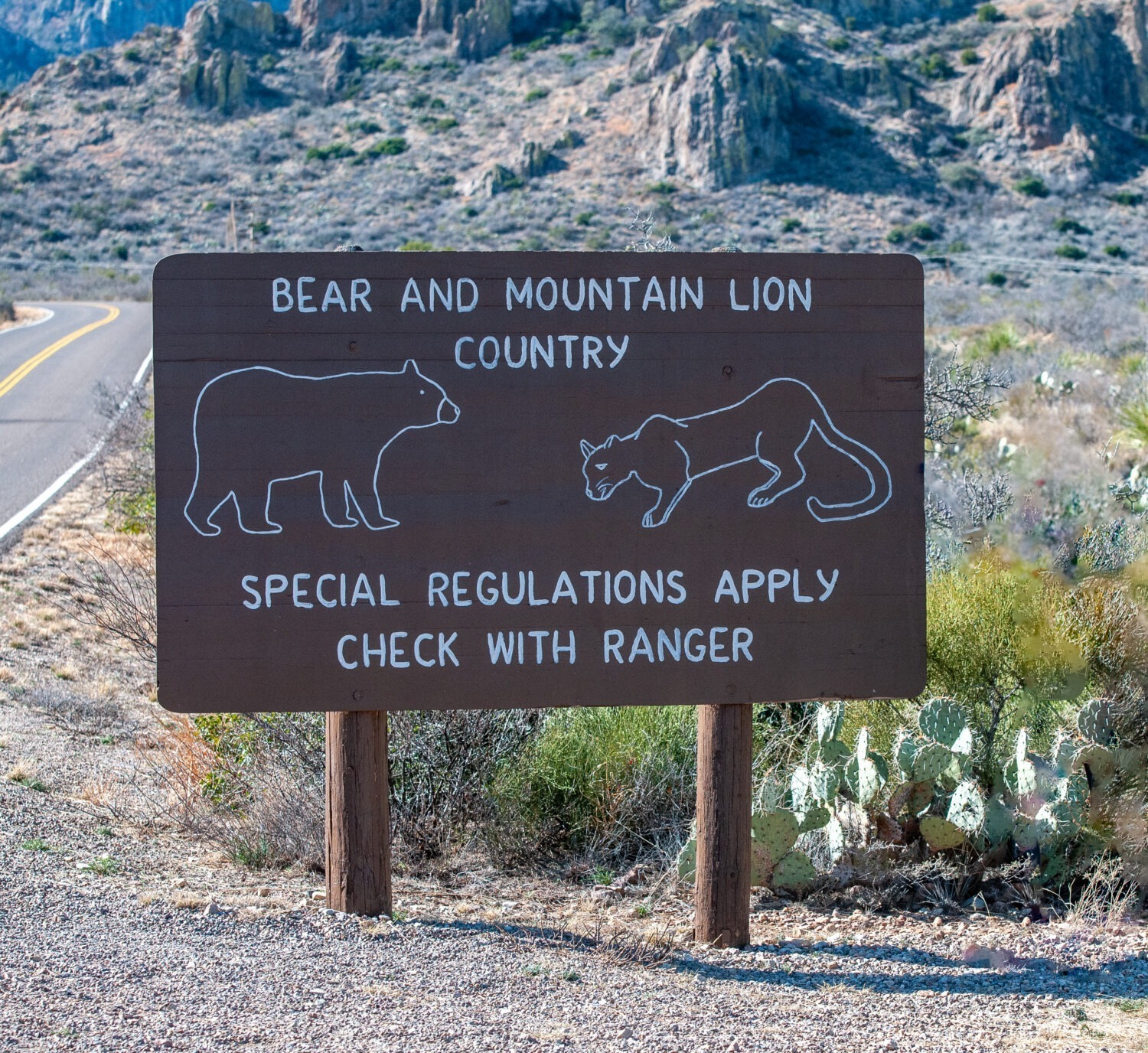
Respect park rules and regulations. Follow park rules and regulations to help protect the park’s natural resources and ensure a safe and enjoyable visit for all visitors. Let people know your plans so they can call for help should you miss a designated check-in time.
It’s also important to be aware of the potential dangers of the natural environment when visiting Big Bend and take appropriate precautions to ensure your safety. Like any natural area, Big Bend National Park is home to a variety of poisonous and dangerous plants and animals. Here are some examples:
Rattlesnakes: There are several species of venomous snakes found in Big Bend, including the Western Diamondback, Mojave, and Black-tailed Rattlesnakes. These snakes can be dangerous if disturbed or provoked, so it’s important to be aware of their presence and give them plenty of space.
Mountain Lions: These large predators are found throughout the park and can be dangerous if encountered. The population is estimated at approximately 25 cats. Be sure to hike in groups and make plenty of noise to avoid surprising a mountain lion.
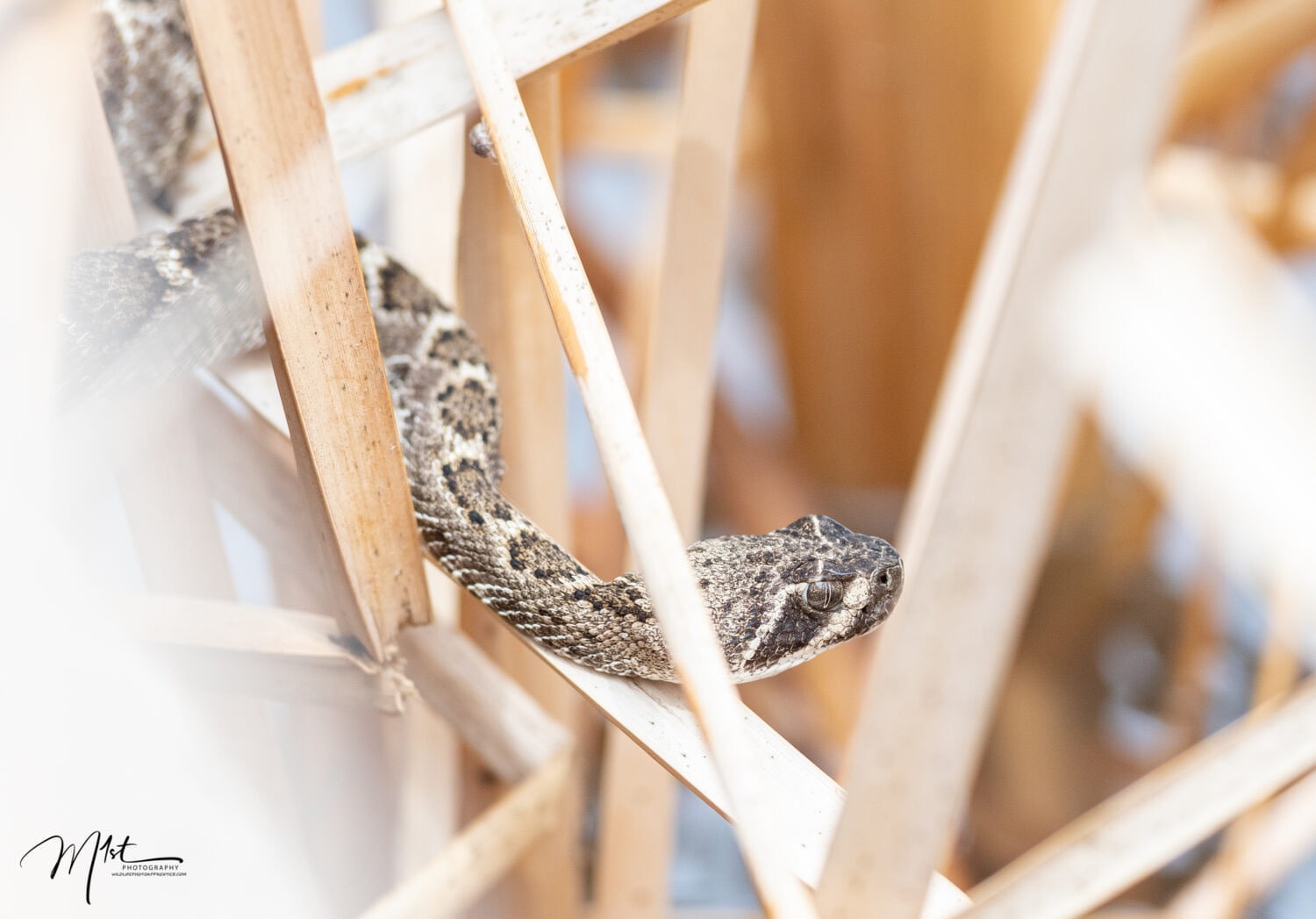
Poisonous Plants: There are several species of poisonous plants found in Big Bend, including Poison Ivy, Poison Oak, and Poison Sumac. These plants can cause skin irritation and allergic reactions, so it’s important to be able to identify them and avoid contact.
Scorpions: Several species of scorpions are found in Big Bend, including the Bark Scorpion, which is the most venomous species in North America. These creatures can be dangerous if disturbed or provoked, so it’s important to be cautious when hiking and camping.
Tarantulas: While not venomous, tarantulas are common in Big Bend and can deliver a painful bite if provoked.
Cholla Cactus: This cactus has long, barbed spines that can be difficult to remove if you come into contact with it. Be sure to avoid touching or brushing against Cholla Cactus when hiking.
By following these travel tips, you can help ensure a safe and enjoyable visit to Big Bend National Park. I am a physician working at the regional trauma center that services this part of Texas. I can tell you for sure that if you are seriously ill or injured in the park you are hours away from definitive care. As they say “an ounce of prevention is worth a pound of cure”.
In conclusion, Big Bend National Park offers a unique and unforgettable experience for wildlife photographers. With its diverse array of landscapes and an incredible variety of plant and animal life, the park provides countless opportunities for capturing stunning photographs. Whether you’re a seasoned pro or a beginner, there’s something for everyone in this incredible wilderness area. From the majestic birds soaring through the skies to the elusive mammals that roam the desert floor, Big Bend National Park is truly a photographer’s paradise. So grab your camera and head out to the wilds of Texas to experience the beauty and wonder of Big Bend for yourself!
